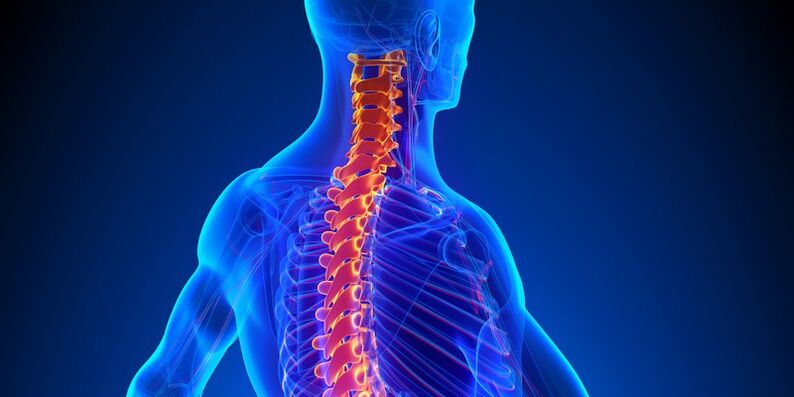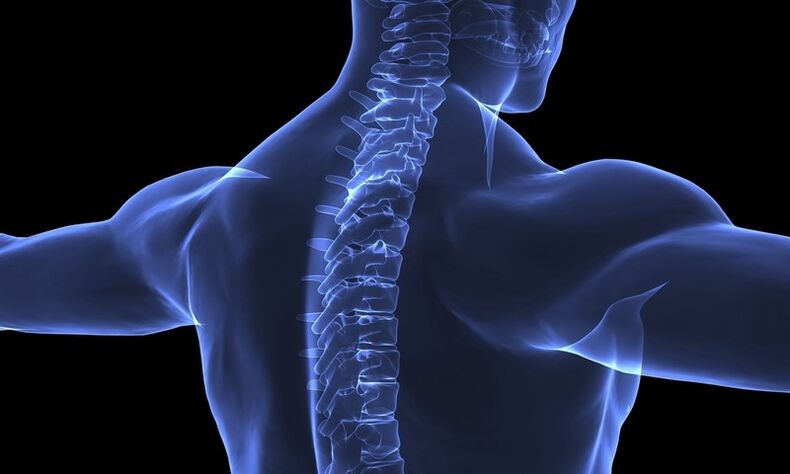If you are worried about neck pain and have not yet seen a doctor, you should learn what is the danger of cervical osteochondrosis and what can be fatal. Being aware of the danger should move you.
Cervical osteochondrosis is one of the most dangerous lesions of the spine due to the large number of blood vessels and vital arteries and capillaries in the neck. Therefore, the adverse effects of this disease include vegetative-vascular dystonia, hypertension, oxygen starvation, etc.
Cervical osteochondrosis can not go unnoticed, because in most cases, severe pain is accompanied by vivid symptoms. Pain syndrome is an indicator of dysfunction of the whole organism. If you ignore these symptoms, the consequences can range from irreversible damage to the spine to death.

After examining the following information, you will see that the consequences of cervical osteochondrosis are really serious, that is, you should never delay a full-fledged complex treatment.
General clinical picture
Disorders of the cervical spine mainly affect the lower segments associated with physiological characteristics and lifestyle. If you feel aching pain in the neck, shoulders, or head, it indicates degenerative changes in this area, a constricted nerve, muscle spasms, or a constriction of the vertebral artery.
Cervical osteochondrosis affects the spinal segments responsible for the functioning of the shoulder and elbow joints, thyroid gland, hands, esophagus and trachea. The most common symptoms include pain in these areas of the body, hypothyroidism, seizures, numbness in the face and hands, coughing, and difficulty swallowing.
At the beginning of the disease there are complaints of constant headache, fatigue, hearing and vision impairment, dizziness, fainting. Of course, in parallel, there is always a sharp or sharp pain in the neck and shoulders. At this stage of the disease, it is important to start a course of treatment, including a visit to a doctor, diagnosis and taking special medications, as well as physiotherapy, manual treatment for cervical spine osteochondrosis.
Otherwise, the disease will progress to the next level, cervical osteochondrosis will be very difficult to defeat, and complications will begin, if not impossible.
Spinal lesions
If a nerve is compressed anywhere by vertebral discs in the spine, hernias and protrusions occur. These pathologies are chronic, sometimes exacerbated, then reduced.If you have severe pain attacks and are not bothered for even a few weeks, it does not mean that the disease has receded and everything has gone by itself. It does not pass "on its own", the treatment of protrusions and then hernias requires complex treatment for several months or even years.
A herniated disc immediately causes bone growth in the vertebral bodies, salt deposition in the arteries, and sclerotic plaques. In addition, the danger comes from the transmitted vertebral arteries, which are unable to fully transport oxygen and nutrients to the brain, inner ear, and upper part of the spinal cord. Oxygen starvation occurs, which causes dizziness, loss of consciousness and constant fatigue. The pituitary gland suffers, the hypothalamus malfunctions, breathing and swallowing become difficult.
The heart becomes harder to work, increasing its rhythm and working faster, and blood pressure automatically rises, which in turn affects the arteries.
Disorders of the vegetative-vascular system
Medications - analgesics, antispasmodics, painkillers, etc. - Without parallel physical activity, therapeutic massage will relieve pain and other symptoms, but only for a short time. The body will quickly become accustomed to the active substances, stop responding to them, the disease will return and the symptoms will sometimes intensify.

It is threatened by vegetative-vascular dystonia, which is the most dangerous for cervical lumbar osteochondrosis. The whole body suffers as a result of constriction of the vertebral artery, which provides one-third of the nutrition of the brain and other vital organs.
By the way, many doctors do not consider vegetative-vascular dystonia an independent disease. Experts are convinced that this is only the result of a breakdown of other systems. Osteochondrosis of the cervical spine is often the main "provocateur" of cardiovascular disease.
Above all, the vasomotor center, which is responsible for regulating vital functions, heart function, and normal blood pressure, suffers. As a result of the lack of normal blood circulation in the upper parts of the body, a person feels numbness in the hands, difficulty breathing and swallowing. Deterioration of motor skills, possible disorientation in space, frequent fainting, especially "cotton".
Due to poor blood flow, the heart tries to fill the "deficiency" and therefore begins to work faster and faster.As a result, blood pressure rises, heart rate rises, and tachycardia begins.After a period of such accelerated work, the heart muscle stretches.
Compression of blood vessels and the spread of complications to the spine adjacent to the neck cause dysfunction of many internal organs. In particular, the adrenal glands are overworked and secrete excessive amounts of the hormone cortisol.
Over time, the disease will progress. Tachycardia, neurological diseases, as well as hypertension and hypotension will bother a person starting cervical osteochondrosis.
Hypertension and hypotension
Another dangerous aspect of cervical osteochondrosis is the provocation of hypertension, one of the most terrible diseases. Initially, it passes without any noticeable symptoms, completely unnoticed by a person. Unfortunately, neck pain is rarely associated with hypertension. Without proper treatment, it can turn into coronary heart disease, cause myocardial infarction and cause a stroke. As you know, deaths from cardiovascular diseases are number one in the world.
When it comes to hypotension, it does not directly deprive the patient of his life, but causes extremely unpleasant symptoms.
Hypotension is an oxygen starvation caused by insufficient nutrition of the brain, cerebellum and inner ear. Due to the small amount of oxygen and other nutrients the brain receives, it cannot keep the body fully functioning.A person has no vital energy, feels weak, chronic fatigue, nausea, drowsiness.Of course, he is always in a bad mood, his performance is declining. There is a long-term deterioration of memory, vision and hearing, loss of concentration.
One of the most striking consequences of cervical osteochondrosis and the hypotension it causes is the so-called fall syndrome - sudden fainting, and one of the most common - headaches and nervous system disorders.
Headaches and diseases of the nervous system
If you do not have the flu, acute respiratory infections, blood pressure is normal, but you still suffer from constant headaches? The consequences of cervical osteochondrosis are quite possible. Nerves constrict, blood vessels constrict, the brain is not given enough blood, resulting in pain and dizziness, pulsation in the temples, pressure on the occipital region.
In such a situation, it is difficult to continue your work with high quality, to be in a good mood, to concentrate and to do sports. If you try to swallow pills from the head, painkillers and do not go to the doctor for a full examination, you run the risk of contracting the disease and provide yourself with serious disorders in all body systems, including the nervous system.
Depression, panic, apathy, nervousness, aggression - all these are indicators of dysfunction of the human nervous system.
If the disease progresses to later stages, it limits your movements, limits your life activities, causes a constant interval, and if you endure during this time, the appearance of neuroses is a completely natural symptom. In addition, if cervical osteochondrosis is not treated, certain syndromes associated with dysfunction of certain organs may develop.
Syndromes
Osteochondrosis of the cervical spine can cause the following unpleasant syndromes:
- Vestibular root syndrome - spoils a person's life and causes great anxiety. The main symptoms include disorientation in space, hearing and vision loss, and fainting. The hands may open involuntarily, and weakness appears in the legs.
- Cochlear syndrome can occur due to the inability of the vestibular apparatus to function normally - it will make a noise in the ears and darken the eyes.
- Laryngeal syndrome sometimes occurs. Then the patient has difficulty swallowing, there is a lump in the throat, the voice becomes quieter and louder.
The list of consequences of cervical osteochondrosis does not end there. All of the above are the main causes of this insidious disease. Remember to contact a specialist at the first complaint and suspicion that you have spinal disease.
He will conduct an examination and develop an individual course of treatment.This is the only way to avoid the terrible consequences of cervical osteochondrosis described in the article.If you are healthy and the disease has not affected you, do not forget about preventive measures to stay healthy in the future.

























